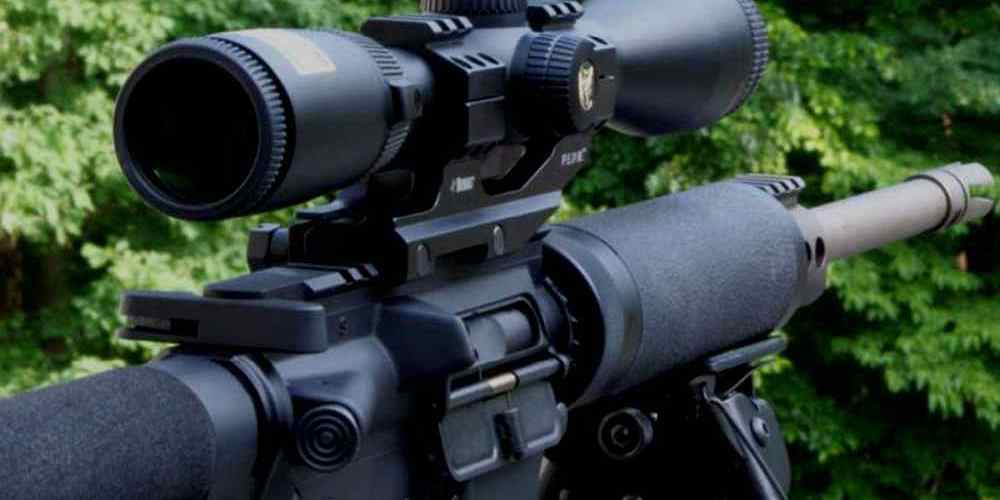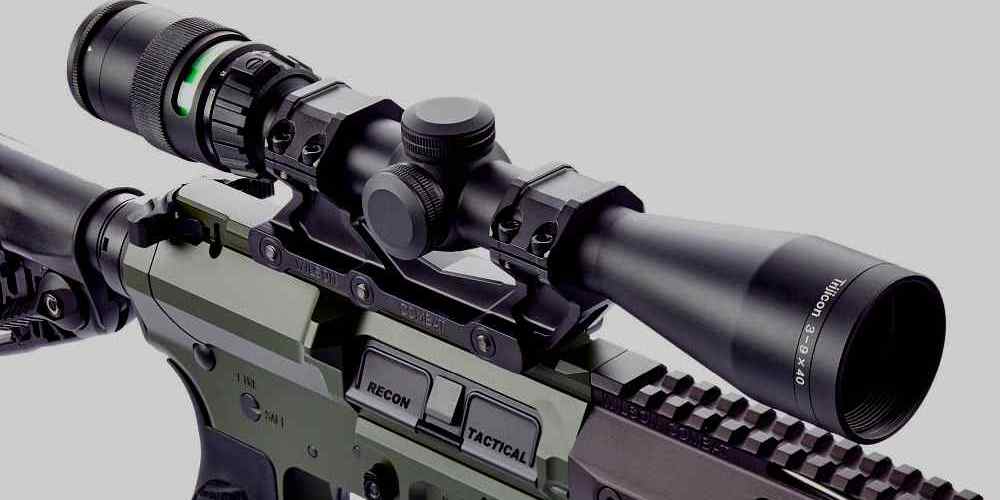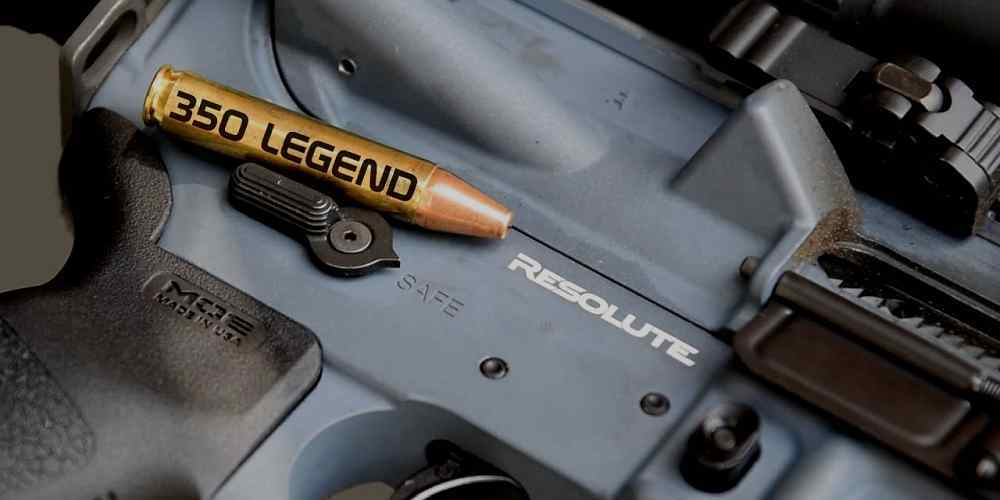“Unlock the potential of your AR-15 with these essential basics.”
History of the AR-15
The AR-15 rifle is a popular choice among gun enthusiasts for its versatility and customization options. But before diving into the world of AR-15s, it’s important to understand the history behind this iconic firearm.
The AR-15 was first developed in the late 1950s by Eugene Stoner, a former Marine and engineer at the Armalite Corporation. The original design was intended for military use, with the first model, the AR-10, being chambered in the 7.62x51mm NATO round. However, the military eventually adopted the M16, a modified version of the AR-15 chambered in the smaller 5.56x45mm NATO round.
Despite its military origins, the AR-15 quickly gained popularity among civilian shooters due to its lightweight design and ease of customization. In the 1980s, the AR-15 became the most popular rifle in the United States, with millions of units sold to civilians for sporting and recreational use.
Today, the AR-15 remains a staple in the firearms industry, with countless manufacturers producing their own versions of the rifle. The AR-15 platform has also spawned a wide range of accessories and upgrades, allowing shooters to tailor their rifle to their specific needs and preferences.
If you’re new to the world of AR-15s, it’s important to familiarize yourself with the basic components of the rifle. The AR-15 is a gas-operated, semi-automatic rifle that fires one round with each pull of the trigger. It features a detachable magazine, typically holding 30 rounds, and is chambered in the 5.56x45mm NATO round.
The upper receiver of the AR-15 houses the barrel, bolt carrier group, and charging handle, while the lower receiver contains the trigger group, magazine well, and stock. The rifle can be disassembled into these two main components for cleaning and maintenance.
When it comes to shooting the AR-15, proper technique is key. Make sure to hold the rifle firmly against your shoulder, with your dominant hand on the grip and your non-dominant hand supporting the front of the rifle. Keep your finger off the trigger until you are ready to fire, and always point the rifle in a safe direction.
Before heading to the range, it’s important to familiarize yourself with the basic operation of the AR-15. Make sure to read the owner’s manual and understand how to safely load, unload, and fire the rifle. Practice proper gun safety at all times, and always treat the AR-15 with the respect it deserves.

In conclusion, the AR-15 is a versatile and customizable rifle with a rich history and a loyal following. Whether you’re a seasoned shooter or a beginner, the AR-15 offers something for everyone. Take the time to learn about the history of the rifle, familiarize yourself with its components, and practice proper shooting technique. With the right knowledge and skills, you’ll be well on your way to enjoying all that the AR-15 has to offer.
Parts and Components of the AR-15
So you’ve just purchased your first AR-15 rifle and you’re eager to get started with it. Congratulations! The AR-15 is a versatile and popular firearm that is used by many gun enthusiasts for various purposes, including hunting, target shooting, and self-defense. Before you hit the range with your new rifle, it’s important to familiarize yourself with its parts and components.
Let’s start with the basics. The AR-15 is a semi-automatic rifle that is chambered in .223 or 5.56mm caliber. It is known for its modular design, which allows for easy customization and upgrades. The rifle consists of several key components, each of which plays a crucial role in its operation.
One of the most important parts of the AR-15 is the upper receiver. This is the top half of the rifle that houses the barrel, bolt carrier group, and charging handle. The upper receiver is where the action of the rifle takes place, as the bolt carrier group moves back and forth to chamber and eject rounds.
Attached to the upper receiver is the barrel, which is responsible for directing the bullet towards the target. AR-15 barrels come in various lengths and profiles, with longer barrels typically providing better accuracy at longer ranges. It’s important to choose a barrel that suits your intended use for the rifle.
Moving down to the lower receiver, you’ll find the trigger group, magazine well, and pistol grip. The trigger group is where the magic happens, as it allows you to fire the rifle by pulling the trigger. The magazine well is where you insert the magazine that holds the ammunition, while the pistol grip provides a comfortable and secure hold on the rifle.
The stock of the AR-15 is another important component, as it provides stability and support while shooting. AR-15 stocks come in various styles, including fixed, collapsible, and adjustable options. Choose a stock that fits your shooting style and preferences.
Other key components of the AR-15 include the handguard, gas system, and muzzle device. The handguard is a protective cover that surrounds the barrel and provides a mounting point for accessories such as lights, lasers, and foregrips. The gas system regulates the flow of gas from the barrel to cycle the action of the rifle, while the muzzle device helps reduce recoil and muzzle rise.
As you can see, the AR-15 is a complex and versatile rifle that consists of many different parts and components. It’s important to familiarize yourself with each of these components before you start shooting, as this will help you understand how the rifle operates and how to maintain it properly.
In conclusion, getting started with your AR-15 rifle is an exciting and rewarding experience. By familiarizing yourself with the parts and components of the rifle, you’ll be better equipped to handle and shoot it safely and effectively. So grab your rifle, head to the range, and start enjoying all that the AR-15 has to offer!
How to Clean and Maintain Your AR-15
So, you’ve just purchased your first AR-15 rifle and you’re excited to hit the range and start shooting. But before you do, it’s important to understand the basics of cleaning and maintaining your new firearm. Proper maintenance is essential to ensure the longevity and performance of your AR-15, so let’s dive into some tips on how to keep your rifle in top condition.
First and foremost, safety should always be your number one priority when handling firearms. Before you begin cleaning your AR-15, make sure the rifle is unloaded and the magazine is removed. Double-check the chamber to ensure there is no ammunition present. Once you’ve confirmed the rifle is clear, you can proceed with disassembling the firearm for cleaning.
To disassemble your AR-15, start by removing the takedown pin located at the rear of the rifle. This will allow you to separate the upper and lower receivers. Next, remove the bolt carrier group (BCG) by pulling back on the charging handle and then pushing it forward to release the BCG. Once the BCG is removed, you can take out the charging handle and the bolt from the carrier.
Now that your AR-15 is disassembled, it’s time to start cleaning. Begin by wiping down the exterior of the rifle with a clean cloth to remove any dirt or debris. Next, use a bore brush and cleaning rod to clean the barrel. Run the brush through the barrel several times to remove any fouling or residue. Follow up with a clean patch to ensure the barrel is free of any debris.
After cleaning the barrel, move on to the bolt carrier group. Use a solvent and a brush to scrub the BCG, paying close attention to the bolt face and gas rings. Once the BCG is clean, wipe it down with a clean cloth and apply a light coat of lubricant to prevent corrosion.
Don’t forget to clean the upper and lower receivers as well. Use a solvent and brush to remove any carbon buildup or fouling. Wipe down the receivers with a clean cloth and apply a light coat of lubricant to protect the metal surfaces.
Once you’ve cleaned all the components of your AR-15, it’s important to reassemble the rifle properly. Start by inserting the bolt back into the carrier and then reinserting the charging handle. Slide the BCG back into the upper receiver and reattach the upper and lower receivers using the takedown pin.
Before you head to the range, perform a function check to ensure your AR-15 is operating correctly. Check the safety selector, trigger, and magazine release to make sure everything is functioning as it should. If everything checks out, you’re ready to load up your magazines and start shooting.
Remember, regular cleaning and maintenance are essential to keep your AR-15 running smoothly. Make it a habit to clean your rifle after each range session to prevent fouling and corrosion. By following these basic cleaning and maintenance tips, you can ensure your AR-15 stays in top condition for years to come. Happy shooting!
Different Types of Ammunition for the AR-15
When it comes to owning an AR-15 rifle, one of the most important things to consider is the type of ammunition you will be using. The AR-15 is a versatile firearm that can be chambered in a variety of calibers, each with its own unique characteristics and uses. In this article, we will explore the different types of ammunition available for the AR-15 and help you choose the best option for your needs.
One of the most common calibers for the AR-15 is .223 Remington/5.56 NATO. This caliber is widely used for target shooting, hunting, and self-defense. The .223 Remington is a civilian round, while the 5.56 NATO is a military round that is slightly more powerful. Both calibers are interchangeable in most AR-15 rifles, but it is important to check with the manufacturer of your rifle to ensure compatibility.
Another popular caliber for the AR-15 is .300 Blackout. This caliber is designed for short-barreled rifles and offers better performance at close range compared to the .223 Remington/5.56 NATO. The .300 Blackout is a versatile round that can be used for hunting, home defense, and tactical applications.
For those looking for a more powerful option, the AR-15 can also be chambered in .308 Winchester/7.62 NATO. This caliber is commonly used for long-range shooting and hunting big game. The .308 Winchester is a civilian round, while the 7.62 NATO is a military round that is slightly more powerful. Like the .223 Remington/5.56 NATO, these calibers are interchangeable in most AR-15 rifles.
When choosing ammunition for your AR-15, it is important to consider the intended use of the rifle. For target shooting and plinking, lighter and cheaper ammunition may be sufficient. For hunting or self-defense, it is important to choose ammunition that offers good terminal performance and accuracy.
It is also important to consider the twist rate of your rifle’s barrel when choosing ammunition. The twist rate refers to how many inches it takes for a bullet to make one complete revolution in the barrel. Different twist rates are better suited for different bullet weights. For example, a 1:7 twist rate is ideal for heavier bullets, while a 1:9 twist rate is better suited for lighter bullets.
In addition to caliber and twist rate, it is important to consider the type of bullet when choosing ammunition for your AR-15. There are several types of bullets available, including full metal jacket (FMJ), hollow point (HP), and soft point (SP). FMJ bullets are commonly used for target shooting, while HP and SP bullets are better suited for hunting and self-defense.
In conclusion, choosing the right ammunition for your AR-15 is crucial for achieving optimal performance and accuracy. Consider the intended use of your rifle, the caliber, twist rate, and type of bullet when making your decision. With the right ammunition, you can make the most out of your AR-15 rifle and enjoy shooting it for years to come.
Tips for Proper Shooting Techniques with the AR-15
So you’ve just purchased your first AR-15 rifle and you’re eager to hit the range and start shooting. Before you do, it’s important to familiarize yourself with some basic shooting techniques to ensure that you have a safe and enjoyable shooting experience.
One of the most important things to remember when shooting an AR-15 is to always keep your finger off the trigger until you are ready to shoot. This is a fundamental rule of gun safety that should never be overlooked. By keeping your finger off the trigger until you are ready to fire, you greatly reduce the risk of accidentally discharging the weapon.
Another key aspect of proper shooting technique with the AR-15 is to maintain a firm grip on the rifle. This will help you control the recoil and ensure that your shots are accurate. Make sure to position your dominant hand high on the grip and wrap your fingers around the front of the trigger guard. Your support hand should then grip the handguard or forend of the rifle, providing additional stability.
When shouldering the AR-15, make sure to position the stock firmly against your shoulder. This will help absorb the recoil and prevent the rifle from moving around while you are shooting. Your cheek should also be firmly pressed against the stock to provide a consistent sight picture.
Proper sight alignment is crucial when shooting an AR-15. Make sure that the front sight post is centered in the rear aperture and that the top of the front sight post is level with the top of the rear sight. This will help ensure that your shots are on target.
Breathing control is another important aspect of proper shooting technique. Take a deep breath, exhale halfway, and then hold your breath while you take your shot. This will help stabilize your body and improve your accuracy.
When shooting the AR-15, it’s important to focus on your trigger control. Slowly squeeze the trigger while maintaining proper sight alignment and breathing control. This will help ensure that your shots are consistent and on target.
After you have fired your shot, make sure to follow through by keeping your sights aligned on the target and maintaining your shooting position. This will help you quickly assess your shot placement and make any necessary adjustments for your next shot.
Remember, practice makes perfect when it comes to shooting the AR-15. Take the time to familiarize yourself with your rifle and practice your shooting techniques regularly. By following these tips and practicing proper shooting techniques, you’ll be well on your way to becoming a skilled and confident AR-15 shooter.




